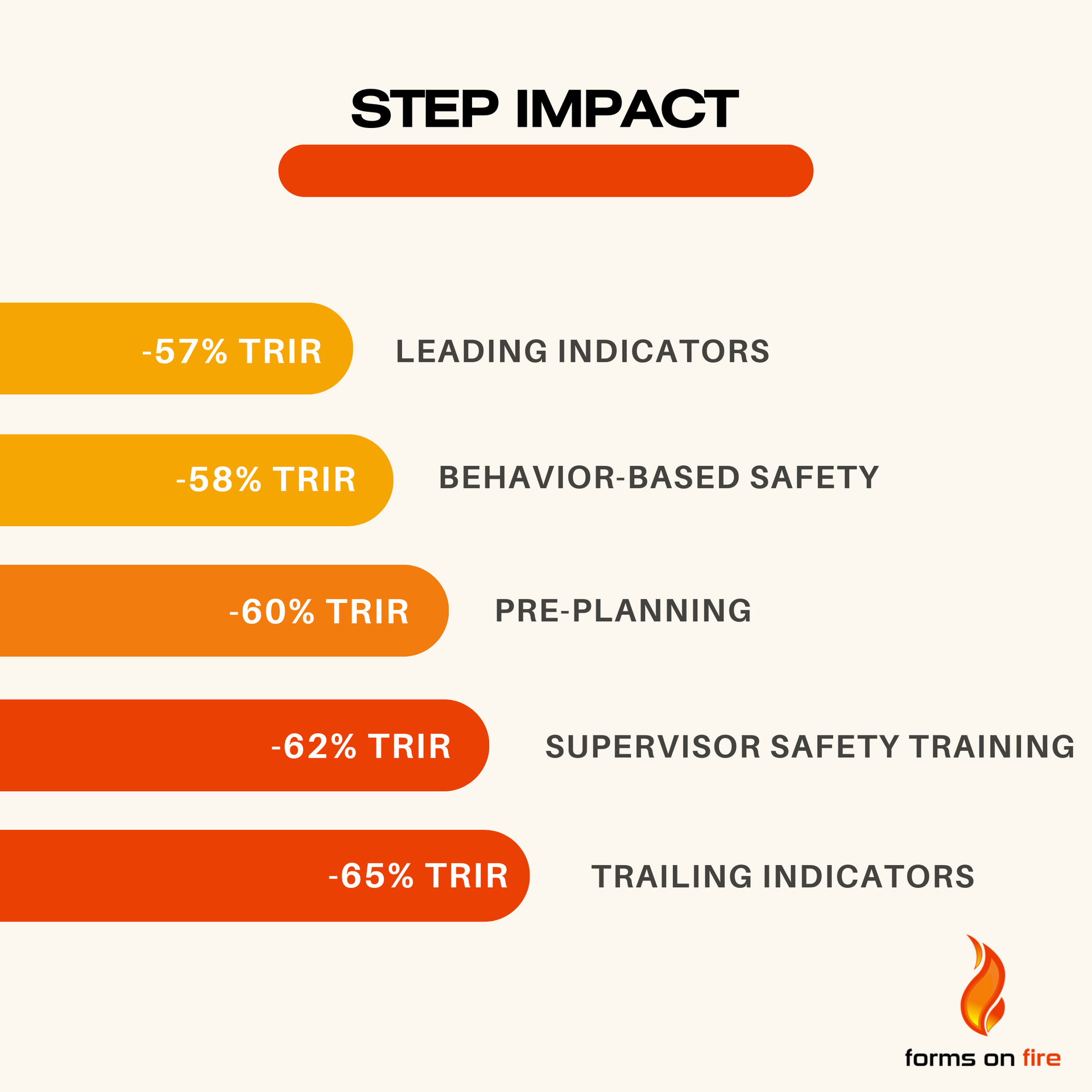TRIR Calculation: How to Find Your Total Recordable Incident Rate
Keeping a detailed record of safety performance is crucial for any organization prioritizing a culture of workplace safety and regulatory compliance. One of the most important metrics used to evaluate safety performance is the total recordable incident rate (TRIR). In this post, we’ll explore what TRIR is, why it’s essential, and how to calculate it.
Let’s break down how your organization can use this metric to drive continuous safety improvement.
What is Total Recordable Incident Rate (TRIR)?
Safety metrics give you a clear picture of how your organization is performing and show where improvements are needed. You can analyze key performance indicators (KPIs) like lost time incident rates (LTIR), severity rates, and total recordable incident rate to identify key trends in workplace incidents and take steps to stop them in their tracks.
Total recordable incident rate, also called TRIR, is the most widely used of these metrics – and for good reason. It’s a standardized measurement of how frequently your employees get injured on the job.
It works by measuring the number of OSHA recordable incidents per 100 employees working full-time in a year. By measuring TRIR, you’ll get a clear snapshot of how well you’re protecting employees from injuries and accidents.
Here are the main reasons you should track your organization’s TRIR:
- Regulatory compliance: Workplace safety is heavily regulated by OSHA. A high TRIR score may lead to increased inspections, fines, and even operational shutdowns in extreme cases.
- Insurance premiums: Since insurance providers use TRIR to assess the risk of insuring a company, Keeping your TRIR low can translate into big savings on insurance premiums.
- Reputation and recruitment: Organizations with a low TRIR are considered more responsible and reliable, making them more attractive to top talent.
- Project bidding: In industries like construction, TRIR can directly impact business opportunities. Oftentimes, you’ll have to meet a specific TRIR threshold to be eligible for project bids with government agencies and large corporations.
TRIR Calculation Formula
The TRIR calculation formula assesses the frequency of workplace injuries that require medical attention or result in lost time. Here’s how you can calculate your TRIR step by step:
TRIR = (Number of OSHA recordable incidents × 200,000) / Total number of hours worked
Here’s a quick breakdown of each element in the formula:
- Number of OSHA recordable incidents: These are workplace injuries or illnesses that meet OSHA’s specific criteria. Examples include injuries that result in days away from work, restricted work activity, job transfers, medical treatment beyond first aid, loss of consciousness, or fatalities.
- 200,000: This number is used to represent the total number of hours worked by 100 full-time employees in one year. It’s meant to normalize the incident rate, making it easier to compare safety performance across industries of varying sizes.
- Total number of hours worked: This encompasses all hours worked by employees, contractors, and temporary workers, excluding non-work hours like vacation and sick leave.
Now, let’s see the formula in action. If your business had 6 recordable incidents last year and your employees worked a total of 500,000 hours, your calculation would look like this:
TRIR = (6 × 200,000) / 500,000 = 2.4
As you can see, you’d get a TRIR of 2.4. That means that for every 100 full-time employees, approximately 2.4 recordable incidents occurred.
What is a Recordable Incident?
Correctly identifying recordable incidents is crucial to accurately measuring TRIR. That’s why understanding what qualifies as a recordable incident is so important. According to OSHA, a recordable incident is any work-related injury or illness that results in:
- Death
- Loss of consciousness
- Days away from work
- Restricted work or job transfer
- Medical treatment beyond first aid
If your incident results in minor cuts and bruises that can be treated with a first aid kit, it typically won’t classify as a recordable incident.
What Classifies as a Good TRIR?
In a perfect world, your TRIR calculation will be 0, but that’s not always realistic. In general, any score under 3 is considered a good TRIR. This can change depending on your industry, however, so it’s always best practice to review industry averages before setting your TRIR goals.
When it comes to benchmarking safety performance, comparing your business to the industry standard is essential. Knowing your North American Industry Classification System (NAICS) code can be helpful for identifying and understanding recordable incidents common to your industry.
NAICS groups businesses into specific industries. Each industry has its own set of safety standards and risk levels. When you know your industry code, you can compare your incident rates with stats specific to your line of work and determine if your safety performance is above or below average in your sector.
You can also read up on common hazards in your industry and implement proactive safety measures, which can reduce the likelihood of recordable incidents.
How to Maintain and Improve Your TRIR
Maintaining a low TRIR is crucial for regulatory compliance, cost savings, and reputation management. Here are some strategies to help reduce your TRIR and keep your employees safe:
1. Implement Preventative Safety Processes
Taking proactive steps can dramatically reduce recordable incidents and improve overall safety. Some examples of typical safety measures include conducting regular safety audits, spotting potential hazards before they trigger an accident, and keeping all employees properly informed about the latest safety protocols.
You might even try a program dedicated to reducing incident rates and improving overall safety performance, like ABC’s Safety Training Evaluation Process (STEP), for example. The STEP program grants certification to organizations that meet a set of safety benchmarking and improvement standards. Their most recent safety report, the 2024 ABC Safety Performance Report, has revealed a list of core leading indicators used to identify hazards and prevent injury by eliminating or minimizing the condition.
The core indicators with the most dramatic impact on safety performance are as follows:
- Leading indicators: Tracking activities that prevent and control injury, like new hire safety orientation, safety training, and behavior-based safety observations.
- Behavior-based safety: Informing management and employees of the organization's overall safety culture.
- Pre-planning for project safety: Educating project supervisors on pre-planning for project safety.
- Supervisor safety training: Ensuring all supervisory personnel understand the company’s safety policy, supervisor safety expectations, and other specific competencies.
- Task-specific safety process: Defining the scope of work, analyzing hazards, developing and implementing hazard control methods, performing the work within established controls, providing feedback, and ensuring continuous improvement.
- Trailing indicators: Measuring metrics used to qualify safety performance based on historical data (TRIR, DART, and EMR).
- Biannual safety program performance review: Performing a biannual review by executive leadership to evaluate the program’s effectiveness and identify opportunities for improvement.
According to ABC’s data, following this safety management plan can reduce your TRIR by 83%. Additionally, simply tracking and reviewing activities carried out to prevent and control injury (like safety training, new hire safety orientation, and behavior-based safety observations) leads to a 65% reduction in TRIR.

2. Validate All Inputs
If you want an accurate TRIR, you need accurate reporting. Make sure that all recordable incidents and employee work hours are properly documented. That includes verifying that every injury reported meets OSHA’s recordable incident criteria and that you’re including worked hours for all employees, contractors, and even temporary workers. When you validate your inputs, you can avoid inflated TRIR calculations and maintain an accurate safety record.
3. Invest in Comprehensive Safety Orientations
Of all the ways to reduce workplace injuries, employee safety training is the most effective. Comprehensive safety orientations that clearly outline safety procedures, emergency response plans, and hazard communication protocols can be instrumental when it comes to preventing accidents. So if you want to improve your TRIR, try investing in in-depth, ongoing safety education programs for both new hires and seasoned employees.
4. Streamline with Software
When you track and record TRIR calculations manually, human error is inevitable. Incident management software, on the other hand, takes the guesswork out of the safety tracking process. These tools standardize and automate your TRIR tracking workflow so you can count on accurate results and seamless reporting.
Check out these benefits of taking your TRIR calculation process digital:
- Automated data collection: Automatically catalog incident reports, work hours, and other data in real time.
- Simplified compliance: Monitor adherence to OSHA regulations and maintain compliance with the help of organized record-keeping made easy.
- Customized reports: Generate detailed reports that can help you track trends, compare performance across your business, and identify areas that need attention.
- Mobile access: Submit incident reports from the field using custom mobile apps.
Wrapping up
Accurately tracking the total recordable incident rate (TRIR) can help your business monitor safety performance, comply with regulatory requirements, and identify aspects of your work environment or processes that could use a bit of improvement. And maintaining a low TRIR helps ensure regulatory compliance while also boosting your company’s reputation and saving on costs.
Looking to improve your company’s TRIR and need help managing safety performance? Forms on Fire’s customizable templates and intuitive mobile app can help you streamline your incident tracking and reporting so you can achieve a safer work environment.
Start your
free trial of Forms on Fire today or
request a demo for more info.




